How To Travel (Or Move!) With Your Cats
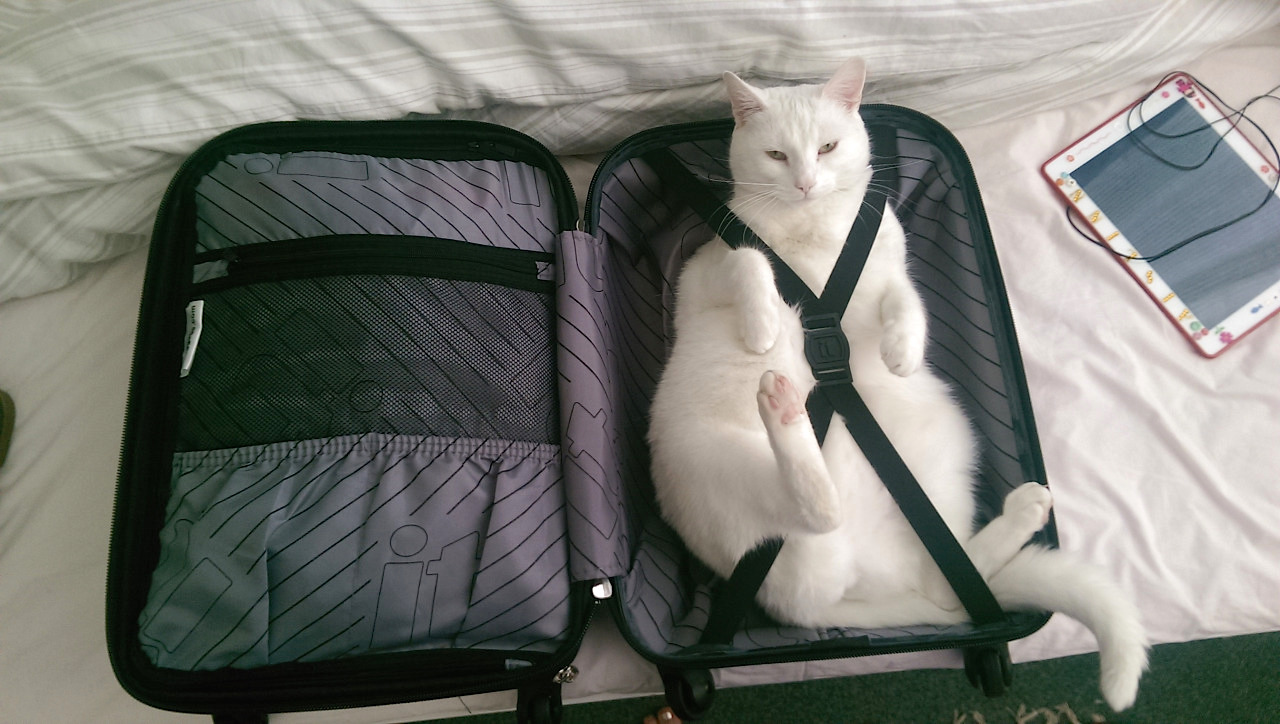
It is a truth universally acknowledged that all cats hate moving. (Thanks Jane, I’ll take it from here.)
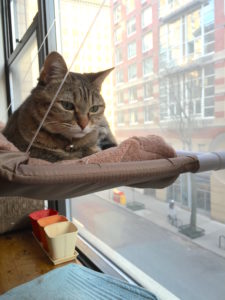 I’m intimately familiar with this truth because it’s confronted me square in the face, multiple times, over the past few weeks. Usually in the form of a furious thrashing cat fighting my attempts to stuff it in a carrier, or a petrified cat I have to dig out from the lining of a mattress. Fun, fun times.
I’m intimately familiar with this truth because it’s confronted me square in the face, multiple times, over the past few weeks. Usually in the form of a furious thrashing cat fighting my attempts to stuff it in a carrier, or a petrified cat I have to dig out from the lining of a mattress. Fun, fun times.
For many of us, moving our cats is a necessity. Whether it’s a long vacation where it makes more sense to bring them along than hire a cat-sitter, or a cross country move (*raises hand*), chances are our sheltered indoor cats are bound to see the inside of an airport sooner or later.
Below, I’ve detailed my experiences, compared several airline carriers, and outlined a few ways to make this whole process a lot less nightmarish.
The Prequel
Firstly, let’s make sure that bringing your cats on your trip is absolutely necessary. Unless you’re moving, it’s usually unwise to uproot your fur gremlins for every weeklong vacation on your calendar. Indoor cats are creatures of habit, deeply territorial, and bonded with their environment. They know every square inch of your home, and that’s the way they like it.
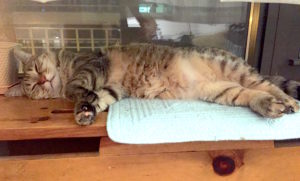
Move? Yea, that sounds like effort.. I think I’ll pass.
Our kitties absolutely do not embrace adventure and uncertainty. They are not beanie-and-flannel-clad millennials with a passport and a trust fund. In fact, they’re probably more akin to a crotchety old hermit with a mild case of schizophrenia. If you can, get a friend to stay with your cats in the comfort of your home. Or at the very least, hire a sitter to visit every day and feed them / keep them company.
No, Stef. The cats have to come.
Righty-o. In that case, let’s start making preparations! (Hopefully you’re at least 30 days out from your big trip). Make sure you have a soft carrier for each of your cats. They should be able to stand up and turn around in it comfortably. Here are a few tried and true airline-approved carriers for small animals:
If you’re concerned about the under-seat storage capacity for each airline carrier, I’ve created a handy chart that compares the under-seat dimensions, as well as the cost of air travel per kitty, for a few top airlines.
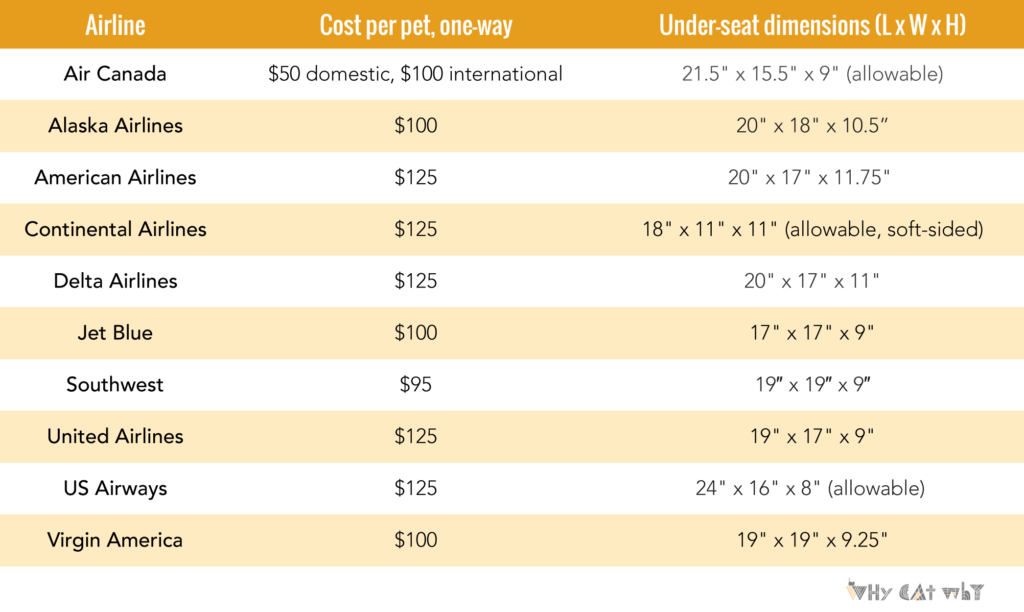
Note that all except the ones marked “allowable” are the actual dimensions of the under-seat space, sourced from firsthand accounts by travelers. The ones marked “allowable” are the airline’s maximum allowable dimensions for under-seat pet carriers.
There’s often a discrepancy in these measurements, since airline-permitted dimensions tend to be more conservative, and many people (myself included) have boarded a plane with a larger-than-permitted pet carrier and gotten by just fine. (Think soft-sided carriers, window seats and strategically-draped blankets.)
The Preparations
This next part is crucial: Don’t sock the carriers away in a closet until D-day. Leave them out in the open—whether in your living room or bedroom—where your cats have full access to them. I tucked mine next to our cat tree, in a high-kitty-traffic corner of our apartment.
Have the carriers out (ideally) a month before your scheduled departure, so the little wombats have plenty of time to get acquainted with them and their smells. Sprinkle some catnip inside. Tuck a few strong-smelling treats in the back, at least every other day.
Don’t try to guide or coax your cats inside—the crafty buggers will get suspicious. Instead, after laying the carriers out in a nice sunny spot and seasoning them with a dash of catnip and some treats, walk away and let your cats discover them on their own. Cats are nothing if not complete suckers for reverse psychology.
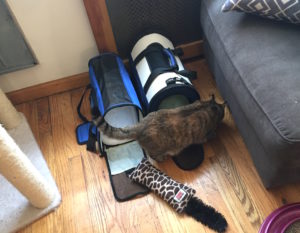
Tentatively exploring…
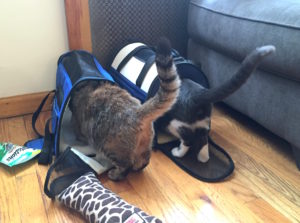
Targets acquired..
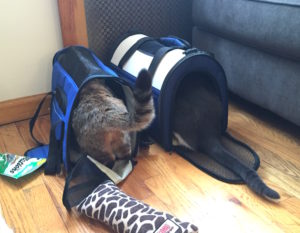
Locked and loaded!
If you’re moving, it’s also a good idea to bring your moving boxes out into your living space in advance, even if you haven’t begun packing. This will give your cats the chance to get accustomed to the boxes’ presence and the changes going on around them.
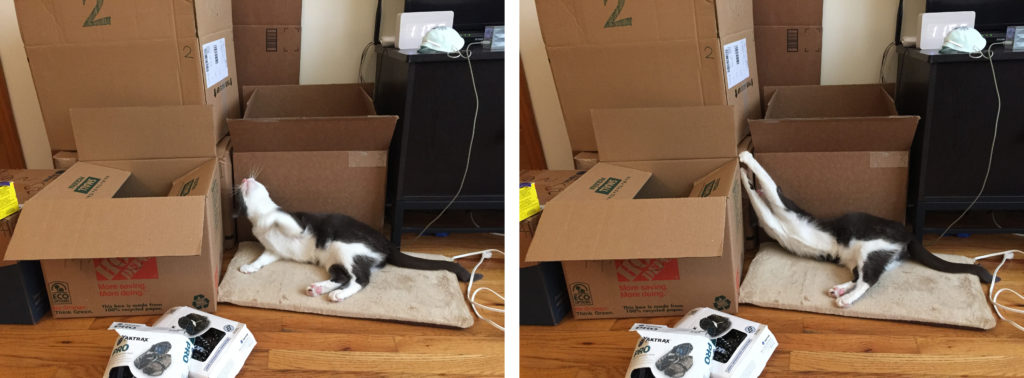
Pip doesn’t mind the boxes. Boxes are his friend.
Go time!
When the fateful day arrives and it’s time to load up your cats, try not to chase them around the apartment at the last minute. Instead, withhold food for a few hours beforehand, and drop a few pieces of kibble into the carrier to lure them inside.
![]() Rubbing a little Feliway (calming cat pheromones) or sprinkling more catnip (calming cat crack) onto the padding of the carrier can help to further ease your cats’ anxiety levels.
Rubbing a little Feliway (calming cat pheromones) or sprinkling more catnip (calming cat crack) onto the padding of the carrier can help to further ease your cats’ anxiety levels.
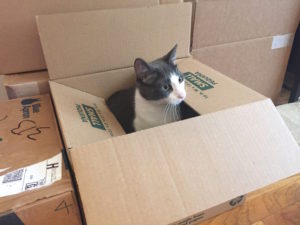 We brought our cats, one at a time, into the bathroom and shut the door, and proceeded to calmly guide them into the carrier.
We brought our cats, one at a time, into the bathroom and shut the door, and proceeded to calmly guide them into the carrier.
When that failed catastrophically, we turned the carriers on their sides and lowered our flailing cats in like sacks of potatoes at the grocery store checkout. Many scratches ensued. Much swearing. I still have the (mental and physical) scars.
Looking back, it would have been a lot more effective (and painless) to burrito them each in a towel and slide them into their carriers, pulling the towel out when the door was halfway zipped shut. But alas, all our things were in boxes, a cab was idling impatiently outside, and we were desperate. (Our cats have moved with us several times and have become increasingly difficult to outsmart.)
If you’re reading this and wondering “What the hell was the point of that month of cat-carrier-acclimatization if it doesn’t even make loading them up easier??”
Don’t fret. I wondered the same thing. But even if your cats are suspicious and crafty and carrier-loathing like mine are, the month of allowing them to get used to the smell and presence of the carriers makes the trip itself (although perhaps not the loading process) much less overstimulating and traumatic.
One takeaway from all this: Most cats are remarkably resilient. And I’m not saying this to be snarky or imply that we kicked the shit out of them during the move. From kittenhood til now, there’s precious little we’ve inflicted on our cats (from vet visits and surgeries to baths and international travel) that they haven’t been able to shake off entirely, carrying on with their carefree existences like nothing happened. So there’s really no need to baby the shit out of them! Provide for them endlessly and spoil the crap out of them if you wish, but don’t beat yourself up if you end up having to wrestle them into a carrier. Remember, they’re hardy little critters who essentially domesticated themselves. :]
Once outside, the two gremlins fell mercifully silent. Yowling attracts predators, after all, and they weren’t in Kansas anymore.
While on the way to the airport or on the plane, it’s always a good idea to prevent your cats from feeling over-exposed. Most carriers have plenty of mesh inserts for proper ventilation and visibility, but these can also terrify and overstimulate your cat. In the cab and in the airport waiting area, I kept a light jacket thrown over their carriers, with a small opening for them to see me through.
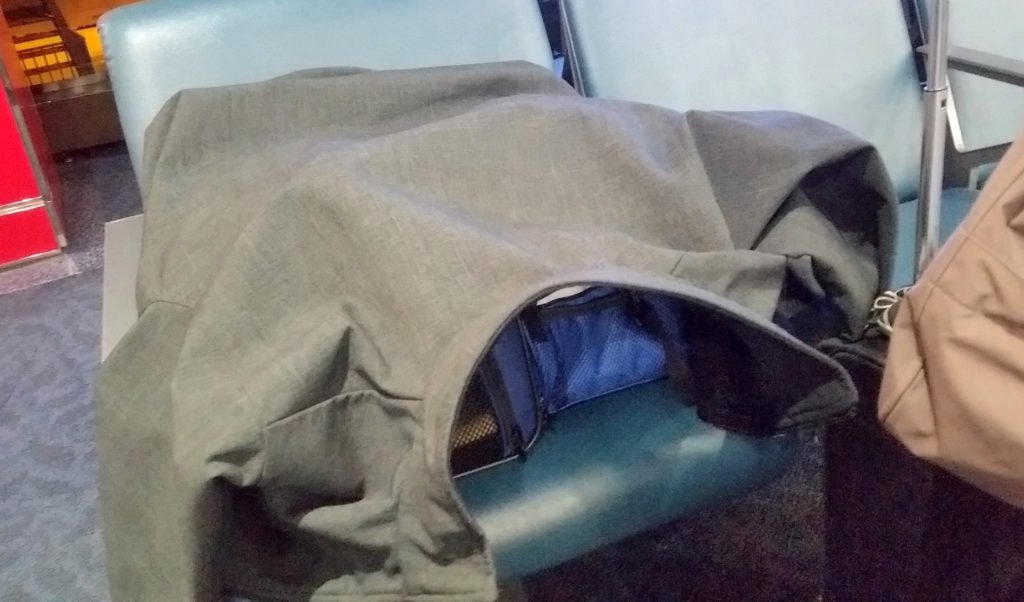
Two kitties, en route. Talk about not babying them, eh?
Once on the plane, my husband and I each kept a foot tucked by the front of their carriers, so they always knew we were around.
Introduction to the new territory
When we arrived at our airbnb, I hustled them from the car into the house, setting their carriers down in a nice quiet closet. I immediately prepped their cat litter box and set up their food / water bowls, before letting them out.

Pips lounging in bed at our cute little airbnb
It’s important to make sure all these necessities are in the same room, which will serve as your cats’ “home base” from which to explore the rest of the residence. Your bedroom is always a good choice for a kitty’s temporary home base, since they’ll likely want to stick with you for comfort and an added sense of security.
Keep the door to the home base room closed at all times, and scatter a few treats around to encourage them to explore. Also, make sure you’re spending plenty of time in the room with them, reading, watching TV, or quietly unpacking.

Meanwhile, this one is already sleeping by the front door.
After they become completely at-ease in the home base room (typically after a few days), allow them to explore the rest of the house, room by room, under your supervision. Add another litter box where you plan to keep one permanently, and gradually move the one in your bedroom to a more suitable location.
Don’t be overly concerned if your cat(s) spend most of their time at the beginning huddled under your bed. All cats need time to adapt to a foreign environment, and studies have shown that hiding is an incredibly beneficial coping mechanism for cats, helping them to become more well-adjusted, faster.
So don’t rush things! Let them come out when they’re ready. As always, use all the tools at your disposal to ease their transition: Feliway, catnip, treats, playtime (toys), and cat music. Yes, cat music.
Your kitties will revert back to their snuggly, intrusive, well-adjusted ways in no time. :]
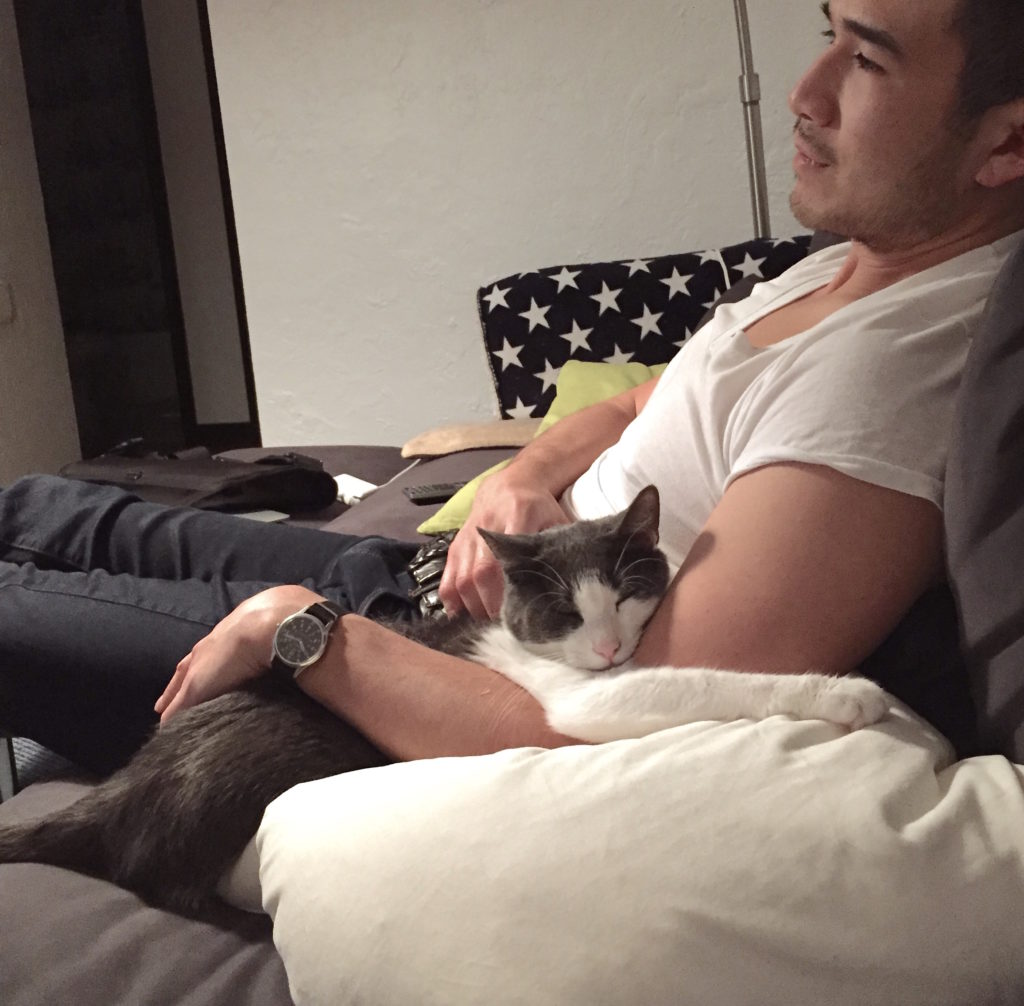
Please, pops. Don’t make me move anymore.
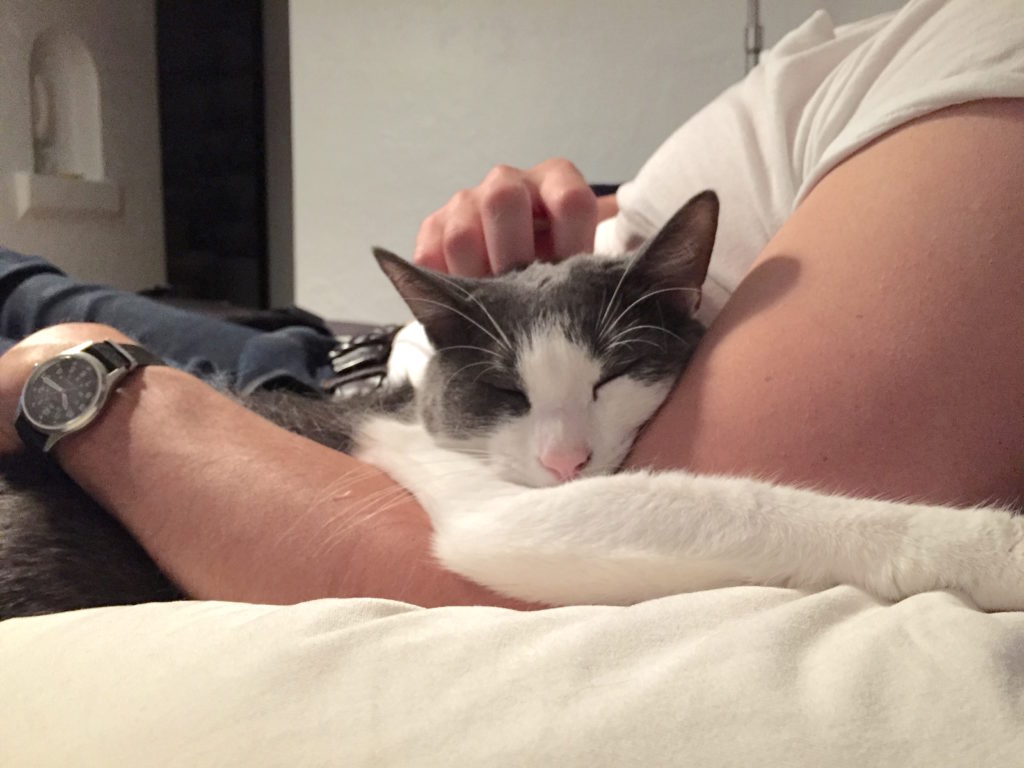

Ok one more, because how cuddly is this sleepy little monkey?
Got any pet travel/moving tips to share? How have your cat-traveling adventures gone? Anyone have cats who actually enjoy traveling??

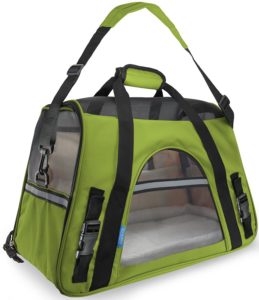
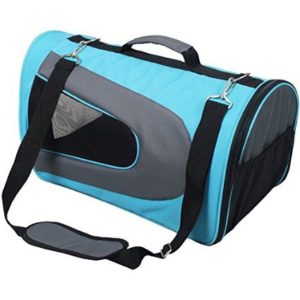
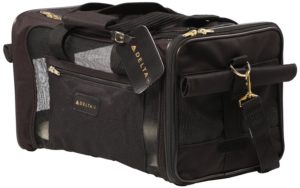
 One takeaway from all this: Most cats are remarkably resilient. And I’m not saying this to be snarky or imply that we kicked the shit out of them during the move. From kittenhood til now, there’s precious little we’ve inflicted on our cats (from vet visits and surgeries to baths and international travel) that they haven’t been able to shake off entirely, carrying on with their carefree existences like nothing happened. So there’s really no need to baby the shit out of them! Provide for them endlessly and spoil the crap out of them if you wish, but don’t beat yourself up if you end up having to wrestle them into a carrier. Remember, they’re hardy little critters who essentially
One takeaway from all this: Most cats are remarkably resilient. And I’m not saying this to be snarky or imply that we kicked the shit out of them during the move. From kittenhood til now, there’s precious little we’ve inflicted on our cats (from vet visits and surgeries to baths and international travel) that they haven’t been able to shake off entirely, carrying on with their carefree existences like nothing happened. So there’s really no need to baby the shit out of them! Provide for them endlessly and spoil the crap out of them if you wish, but don’t beat yourself up if you end up having to wrestle them into a carrier. Remember, they’re hardy little critters who essentially 



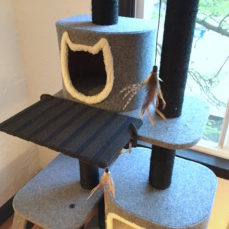
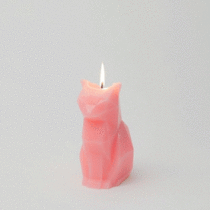
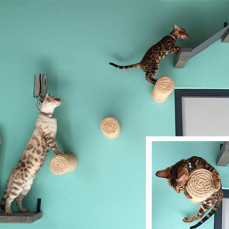



necessary short stays with husband’s mother a car journey away
followed advice you have set out
+
also used home scents that our puss knows
• draped our ‘slept in’ duvet cover from home over bed
• took ‘live’ litter tray
• took her bed (sat it on bedside table in dorm. formation)
• took food bowls
God just travelled to Danmark-Norway with my kitten and will probably be the first of many as my parents and family is in Norway.. But yeah luckily she is still small and adapting to places fast but she is not a big fan of the car ride.. on the way to around 6 hours with walking, metro, flight and car she was fairly calm just moaned at take off and landing but on the way back when we started with the car she moaned the whole car journey..-_-‘ hope it will be easier next time..
Help! Planning a very long move by the fall, by car, with two always-indoor cats. Necessity dictates we drive. Just me, unless I can talk one of my grown sons into riding shotgun and helping me out. I’m very concerned with how the logistics will work: a dog can be put on a leash, on the side of the road and do it’s business. Not so much cats. Plus, we’ll have to stop at night and get motel rooms. Any advise???
Hi Liz, that definitely sounds daunting! Since your cats are strictly indoor cats, I don’t expect they’ll do much in the car other than hide, trembling, in their carriers (firsthand experience here). That said, the best thing you can probably do is make plenty of stops every few hours to let them out of their carriers and see if they’ll have some food/water. Keep your windows shut to limit noise on their sensitive ears, make sure they don’t overheat, and play gentle music at a low volume on the stereo. I have a “cat music” playlist that I play during any necessary car rides with my cats. Think gentle piano, guitar, baby-soothing music, etc.
On nightly motel stops, unpack their litter boxes in one corner of the room and and food/water in another, away from the front door. Make sure they each go to the bathroom, since they likely won’t do so in the car. After a few days of driving, your cats may feel comfortable enough to move around the car and use the litterbox during stops, but don’t beat yourself up if they don’t. Give them tons of reassurance and affection.
Here’s a helpful article I found with a ton of useful tips: http://www.allfelinehospital.com/traveling-with-your-cat.pml
Best of luck!
Thanks for sharing this. We have never had to move…yet…and the only traveling we’ve done has been by car.
Sure! It’s definitely an adventure. And I like to think to cats get more accustomed to it each time.. or maybe just more traumatized :/